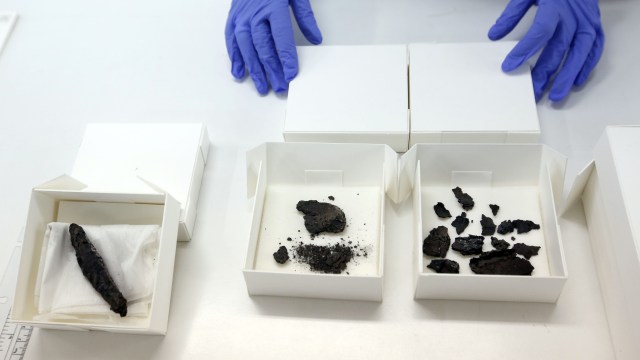Males Organisms Prime Females for Reproduction Through a Mysterious “Essence”

Sometimes women say interacting with their boyfriends or husbands is so frustrating, it takes years off their life. A new study suggests they might be right. Researchers at Northwestern University have found a mysterious biochemical concoction emanating from males, which they call “essence.” It primes females for reproduction, they found. However, it does have one unfortunate side effect. For the females, it also speeds up the aging process.
Ilya Ruvinsky was one researcher on this study. “The male signals trigger the female to ‘go for it’ — to put more effort into reproduction — but then the body suffers,” he said. Ruvinsky hails from the department of molecular biosciences at the university. He clarified by saying, “There is a fine balance between reproduction and body maintenance, and this balance can be tipped by the male. We now are starting to tease apart this complexity.”
C. elegans, a kind of transparent round worm, was used in this study. Known as the “workhorse” of biomedical research, this simple creature has a short lifespan and is easy to manipulate. C. elegans is made up of only about 1,000 cells. “The worm” is a gateway to how biological processes work within many other organisms, including humans.

C. elegans carries out many of the same biochemical processes as higher organisms.
Ruvinsky and colleague Erin Z. Aprison, discovered two different biochemical signals coming from males that were affecting females. The researchers proved that female worms picks up the signal, and that doing so changes their physiology. “One signal causes an earlier onset of puberty in juvenile females,” Ruvinsky said. “The other slows down aging of the reproductive system in mature females, keeping them fertile longer.” Males didn’t age females on purpose. Instead, “The harmful effects appear to be collateral damage.”
Researchers soon found that a male’s presence wasn’t even necessary. Just a small amount of these two pheromones was enough for physiological changes to occur in female worms. Pheromones are defined as biochemicals an organism gives off to alter the behavior or physiology of another of the same species. It can cause a number of different responses, including leading the other to food, for bonding purposes—such as a mother to her baby, to cause sexual arousal, or to serve as a warning, stay away. With the male pheromones, the Northwestern team discovered, even with sterile females (those without eggs), physiological changes occurred as a result.

Human male pheromones are thought to originate from the armpit. Image by David Shankbone – David Shankbone, CC BY 3.0
Ruvinsky said that their study’s findings were similar to previous research done with mice. “In mammals, males also produce signals that manipulate the timing of sexual maturation of females,” he said. “This raises an intriguing possibility that a basic mechanism controlling the rate of sexual development is similar in all animals. Because of this universality, our findings may have implications for humans.”
There is some evidence to suggest that pheromones are at work among our species. The McClintock Effect is one example. This is when women who live in close proximity find that their menstrual cycles sync up. Head researcher Martha McClintock at the University of Chicago, proved that smelling another woman’s sweat either sped up or slowed down a participant’s menstrual cycle, in order to synchronize with the woman whose sweat it was. Another place pheromones may be at play, is when a woman comes into contact with a man’s natural musk.
A study out of the University of California, found that those women at the most fertile part of their cycle, found men who had higher testosterone levels, more attractive. Researchers concluded that inhaling a musky biochemical called androstadienone—from a man’s sweaty armpit, improved a woman’s mood, heightened her sexual arousal, increased her blood pressure, breathing, and heartrate, and even ramped up production of the stress hormone, cortisol, in her system.

Androstadienone’s chemical structure. Model by Cacycle – Own work, [Public Domain],via Wikimedia Commons
In another experiment, by researchers at the University of Northumbria, women were told to rate the attractiveness of a series of men in photos. Participants were split into two groups. One group had a cloth soaked in male sweat nearby where they sat, unbeknownst to them. The other group did not. The group exposed to the pheromones were found to give the men in the photos higher ratings of attractiveness across the board.
Those women on the birth control pill however, did not. They were unaffected. Scientists concluded that we may seek out a partner, at least partially, from their smell. Being one of the oldest and most developed of the senses, it may tell us whether the person’s biochemistry is different enough, and if their immune system is strong enough, to result in healthy offspring. So is androstenone the “essence” for our species?
Experts say that the evidence that pheromones operate in mammals and even humans, is weak. Far more research is required to prove its existence and what mechanisms are at play. Future studies will parse this out. But if this phenomenon is proven to occur in our species, understanding the mechanisms behind it may help us develop new therapies, which could prolong fertility, postpone puberty, and even perhaps slow down the aging process itself.
To learn more about human pheromones click here:





